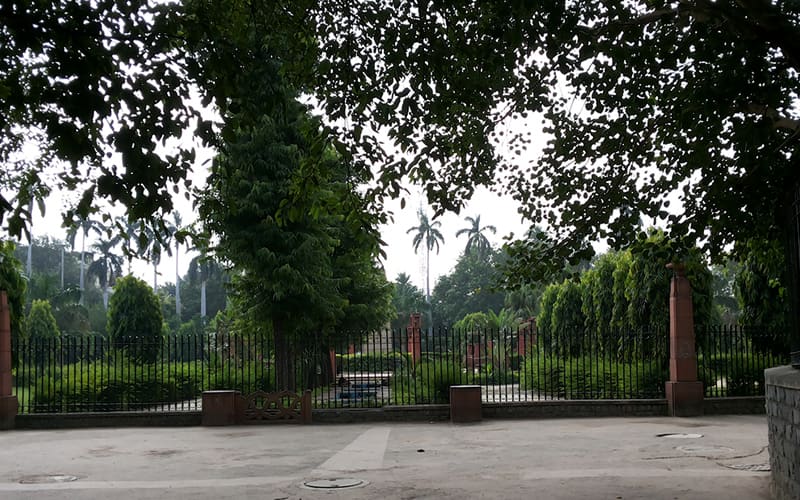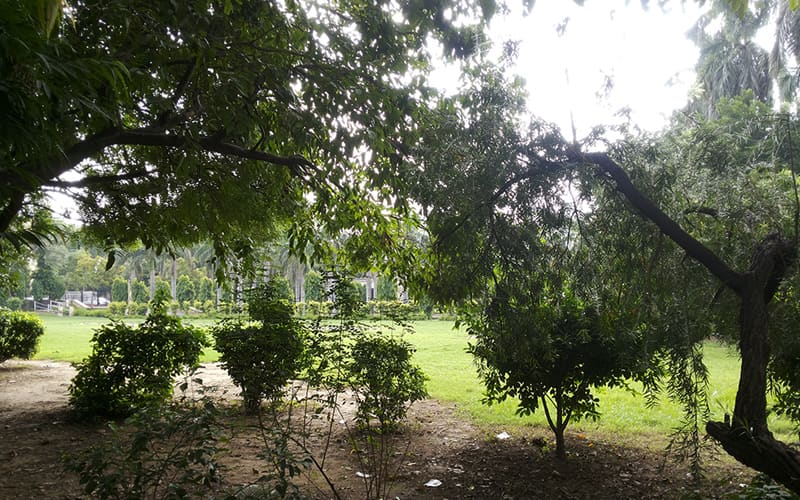 Delhi
Delhi#HiddenGem - Come And Explore Jahanara Sarai & Gardens In Chandni Chowk
The narrow winding streets of Chandni Chowk, the everyday din of curious starry-eyed foreign tourists, insistent street hawkers, busy bazaars, the sound of devout namaaz, the old man doling out generous amounts of biryani, the man at the dupatta store following you with a sample till the end of the lane…it is difficult to relive history in the present day Old Delhi, to shut your eyes and imagine the Chandni Chowk of yore- of suave nobles, bejewelled courtesans, veiled Begums, intoxicated poets, palatial mansions and thriving businesses.
But suddenly you overhear an old man utter some mellifluous Urdu shayari, while his friends egg him on and join him to recite a piece of Ghalib or Zauq or Bahadur Shah Zafar. Immediately, you are transported without warning to what has gone by- the Chandni Chowk conceptualised and designed by the Sahibzaade, the Shahzadi Jahanara Begum.
Jahanara and Chandni Chowk

The iconoclastic Jahanara Begum, daughter of Emperor Shahjahan, designed Chandni Chowk in 1600. The market gets its name from the moonlight reflected in the many canals laid out by her, which ran through the market. It was also her idea to construct all shops in it, in the shape of a half-moon.
The pattern, the artistry and the shimmering waters of the canal are now non-existent today. There is no trace of any of her enterprises. Evidences of her sizeable contribution are to be found only in ancient history books written in Urdu, some rare surviving anecdote penned down by some student of Delhi College, or some piece of memory that has managed to slip through the generations.
Jahanara’s Sarai and Gardens

As about everything else in Chandni Chowk, anecdotes and stories abound about the enigmatic princess, you can glean from every hawker, every faqir, every Maulvi, every resident.
The story goes that the idea of setting up a Sarai was conceived when she was strolling through the glittering silver streets of Dariba Kalan- in disguise, with one of her lovers. Before that, most travellers would find boarding and lodging at the guest houses owned by noblemen. But they were both small, and exclusive.
So, in 1650, Jahanara Begum commissioned the construction of a massive structure of stone and marble, surrounded by an Edenic garden lined with huge green trees, dotted by magnificent fountains, and the abode of numerous chirping birds for whom water and grains were laid out in the lawn. There was also a prayer hall attached to the Sarai. Once a week, Shahzadi Jahanara would come with her retinue and meet the tourists herself- a privilege denied to all other women of
the court.

This Sarai came to be called as “Begumabad”, and the gardens as “Begum ka Baag”. All these accounts are found in Sir Syed Ahmad Khan’s “Asar-us-Sanadid”, documenting monuments and other antiquities of ancient and medieval Delhi.
Again, these books, other yellowed, moth-eaten parchments and the collective memory of the enthused residents of Chandni Chowk, are the only testimonies to this pristine history. Not a wall, not a gate lives to tell its story and the Town Hall now stands where the Sarai used to be.
The Town Hall
The Town Hall was built by the British, and now houses the various important government offices. It is heavily barricaded, and entry can be gained only through much coaxing and cajoling. The well-cemented ceilings, damp air, dusty office files, grimy cubicles, loud and slothful government officers again make it difficult to imagine a magnificent Sarai at this very spot in the erstwhile Shahjahanabad.
The gradual erasure of history, a severance of the essential continuum between the past and the present haunts you, as you prepare to leave. You try in vain to shut your eyes and picture the elegant, assiduous Jahanara, laying down elaborate plans for her beloved city. But the stamp of the Shahzadi stands obliterated by the ravages of time and a swift ascent to modernity.
Like
Bookmark
Share

